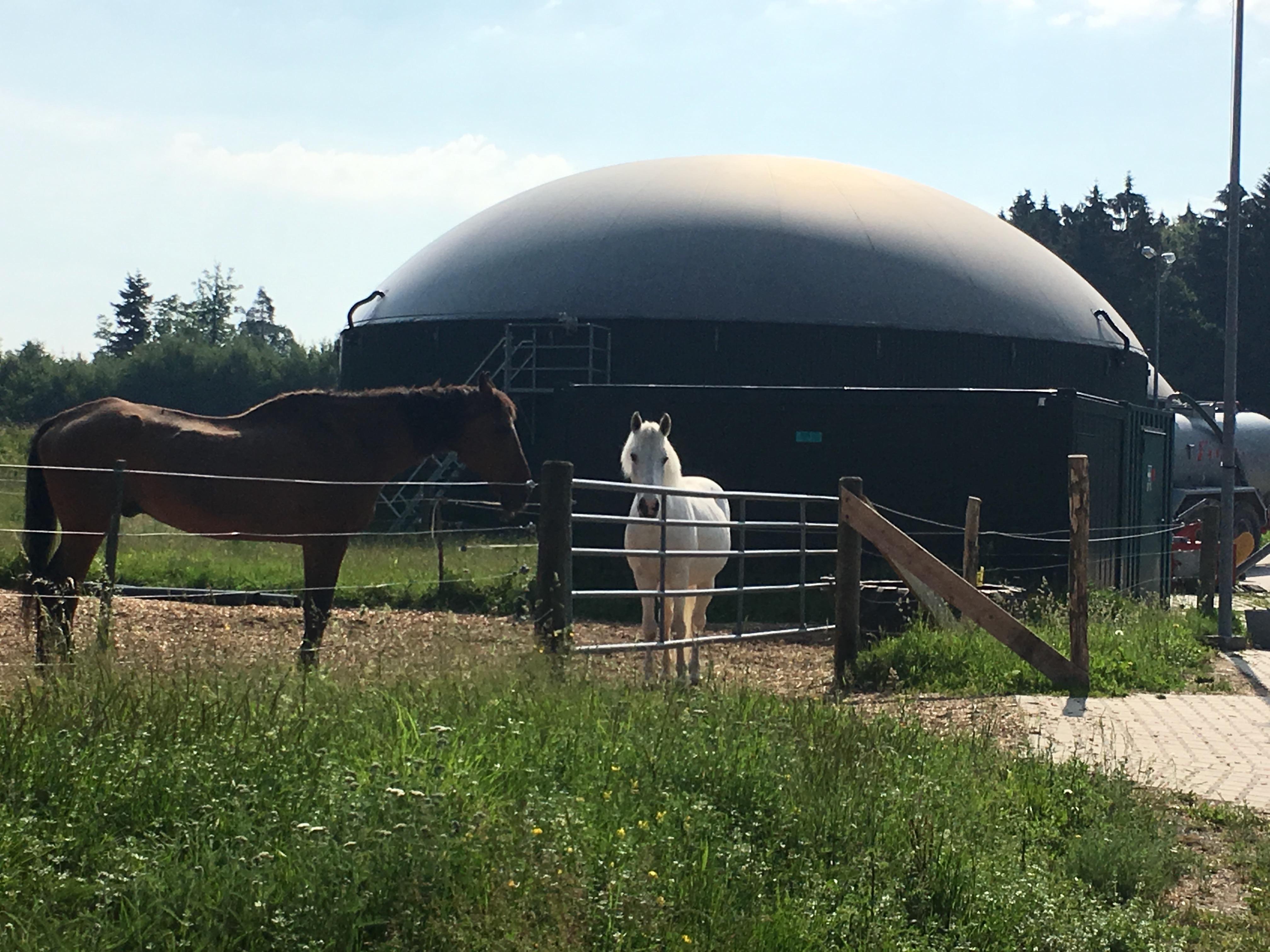Anaerobic digestion is a technological process that transforms waste into renewable energy while reducing greenhouse gas emissions. During anaerobic digestion, biogas is produced from naturally occurring microbes that break down biodegradable material inside a sealed, oxygen-free reactor called a digester. Digesters can process a wide range of feedstocks, such as manure, food scraps, crop waste, or sewage sludge. With rising concerns about odors and greenhouse emissions from manure and food waste, the use of anaerobic digestion processing allows farmers to greatly reduce or eliminate these odors and greenhouse gas emissions from manure management. Additionally, the anaerobic digestion process produces bioenergy and a fertilizer that is largely odor and pathogen-free.

Anaerobic Digestion
Beginner Guides
Anaerobic Digestion Fact Sheet - A Quick SummaryAnaerobic Digestion: Basic Processes for Biogas Fact Sheet
Language Versions
Dijesyon Anayewobik (Kreyòl ayisyen)
Digestión Anaeróbica (Español)
Case Studies and Real Farm Reports
Third-Party Monitoring Report
A detailed evaluation of a working anaerobic digester system
Additional Academic Articles on Anaerobic Digestion
Each of these journal articles is free online:
Evaluation and life cycle assessment of a poultry litter anaerobic digester with nutrient capture
Food waste co-digestion in Germany and the United States: From lab to full-scale systems